Laptop Mag Verdict
The Galaxy S22 may look like its predecessor, but a number of changes inside make it a much more compelling option for most users.
Pros
- +
Unmatched charging and battery life
- +
Impressive triple 50MP camera array
- +
Solid software support
- +
Bright adaptive 120Hz display
- +
Powerful Snapdragon 8 Gen 1 processor
Cons
- -
Occasional stutters in OS
- -
Weak telephoto versus competitors
- -
Generic design
Why you can trust Laptop Mag
Price: $999
OS: MIUI 13 (Android 12)
Display: 6.7-inch (3,200 x 1,440 pixels) LTPO OLED with adaptive 120Hz
CPU: Qualcomm Snapdragon 8 Gen 1
RAM: 8 or 12GB
Rear cameras: 50MP wide (ƒ/1.9); 50MP ultra-wide (f/2.2); 50MP 2x telephoto (f/1.9)
Front camera: 32MP (f/2.45)
Storage: 128 or 256GB
Battery: 11:29 (60Hz); 11:05 (90Hz); 10:31 (120Hz)
Size: 6.4 x 2.94 x 0.32 inches
Weight: 7.23 ounces
The Xiaomi 12 Pro may not have the brand cache of the Samsung Galaxy S22+ or Apple iPhone 13 Pro, but its hardware is absolutely top-notch and thanks to a recent change in tune on software updates, it’s among the best there as well.
The Xiaomi 12 Pro specs list actually puts its competitors on notice with a Snapdragon 8 Gen 1 processor, a triple 50MP camera array including its telephoto lens, a bright and vivid 120Hz adaptive display, and a quad-speaker array tuned by Harman Kardon. However, sometimes phones tick every box on the spec sheet and still come up short.
Fortunately, that fate doesn’t befall the Xiaomi 12 Pro. This is an outstanding phone that earns a place among the best smartphones available today. It does stumble in a couple of areas, but it also outperforms any phone I’ve reviewed in one notable area. Read on to see if the Xiaomi 12 Pro is the right phone for you.
Xiaomi 12 Pro price and configurations
The Xiaomi 12 Pro starts at a recommended price of $999, which includes 8GB of RAM and 128GB of internal storage. You can upgrade to 12GB of RAM and 256GB of storage, but Xiaomi didn’t have official pricing for that upgrade at the time of publication. Since the phone doesn’t have official distribution in the U.S., the prices may vary.
Given that you get 50% more RAM and double the storage, I would recommend the upgrade for most users if it’s $100 or less. However, if you don’t take many photos or videos and you tend to swap phones out every 1-2 years, then you should be fine to skip the upgrade and save your money.
The pricing lines up with other flagships like the iPhone 13 Pro and Galaxy S22+, while the Pixel 6 Pro remains the bargain flagship at $899. While I would have liked to see Xiaomi undercut Apple and Samsung with a $949 price point, you will likely find it on sale for that price or lower almost immediately, but the hardware and updated software support are worth the full price.
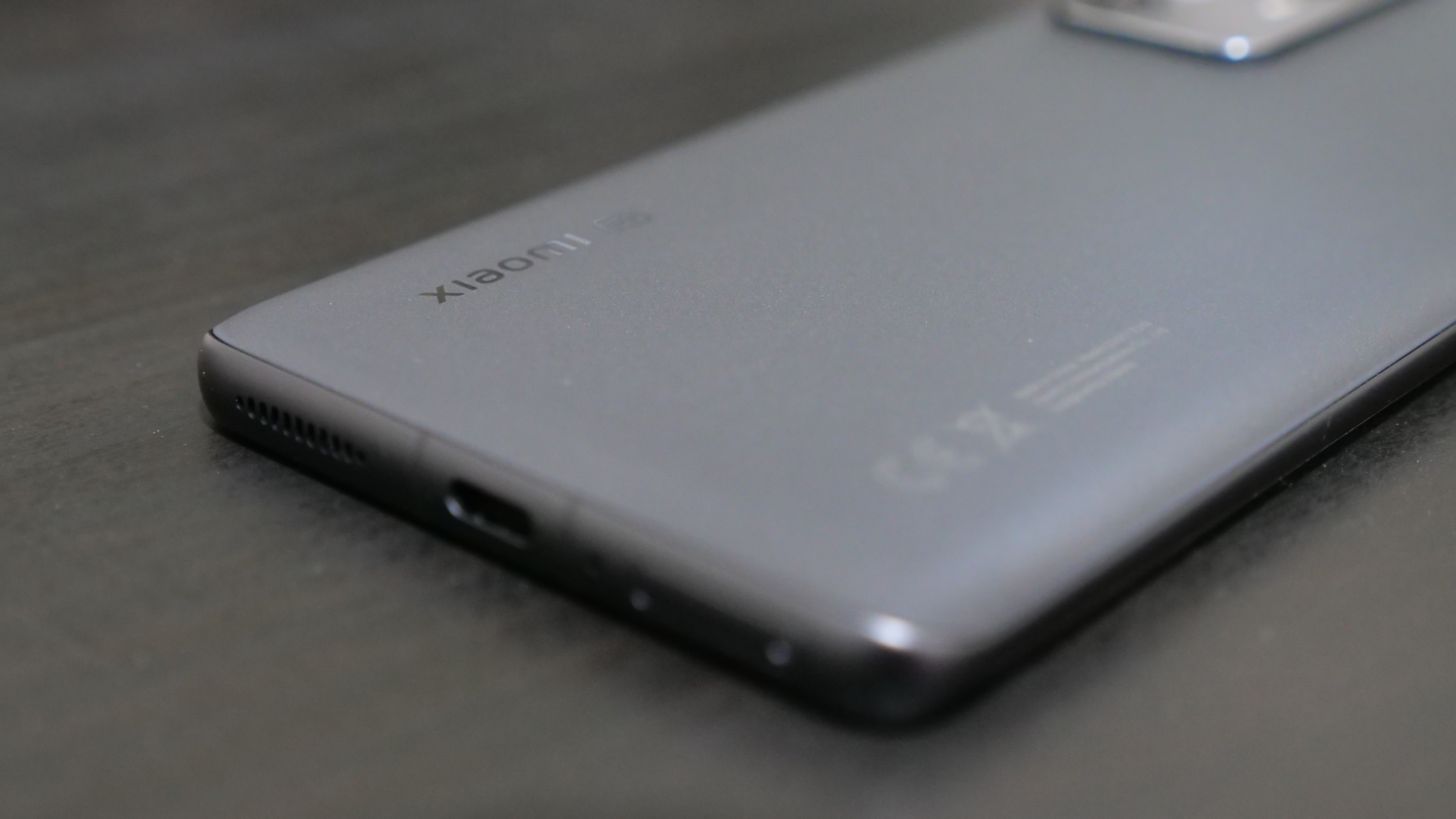
Xiaomi 12 Pro design
The Xiaomi 12 Pro design from a utilitarian standpoint is excellent, but visually it lacks anything to help it stand out from the crowd. The most unique feature is its outsized primary wide-angle camera lens, but the raised rectangular array is otherwise simply reminiscent of a flagship Android phone from a year or two ago.
Sign up to receive The Snapshot, a free special dispatch from Laptop Mag, in your inbox.
There are premium touches here to be sure, but overall this could also be slotted into the dictionary under generic Android flagship. The checklist includes a waterfall display on the front, a pleasantly rounded glass back, the aforementioned raised rectangular rear camera array, a trio of buttons (volume up/down and power), and at the bottom is a USB-C port and SIM card slot. I’ll grant you that the matte finish on the back looks and feels excellent with a matte finish — making me regret putting the included clear plastic case over it. The gray of my review unit is a pretty staid affair, but you can opt for the purple or blue if you want some flair.
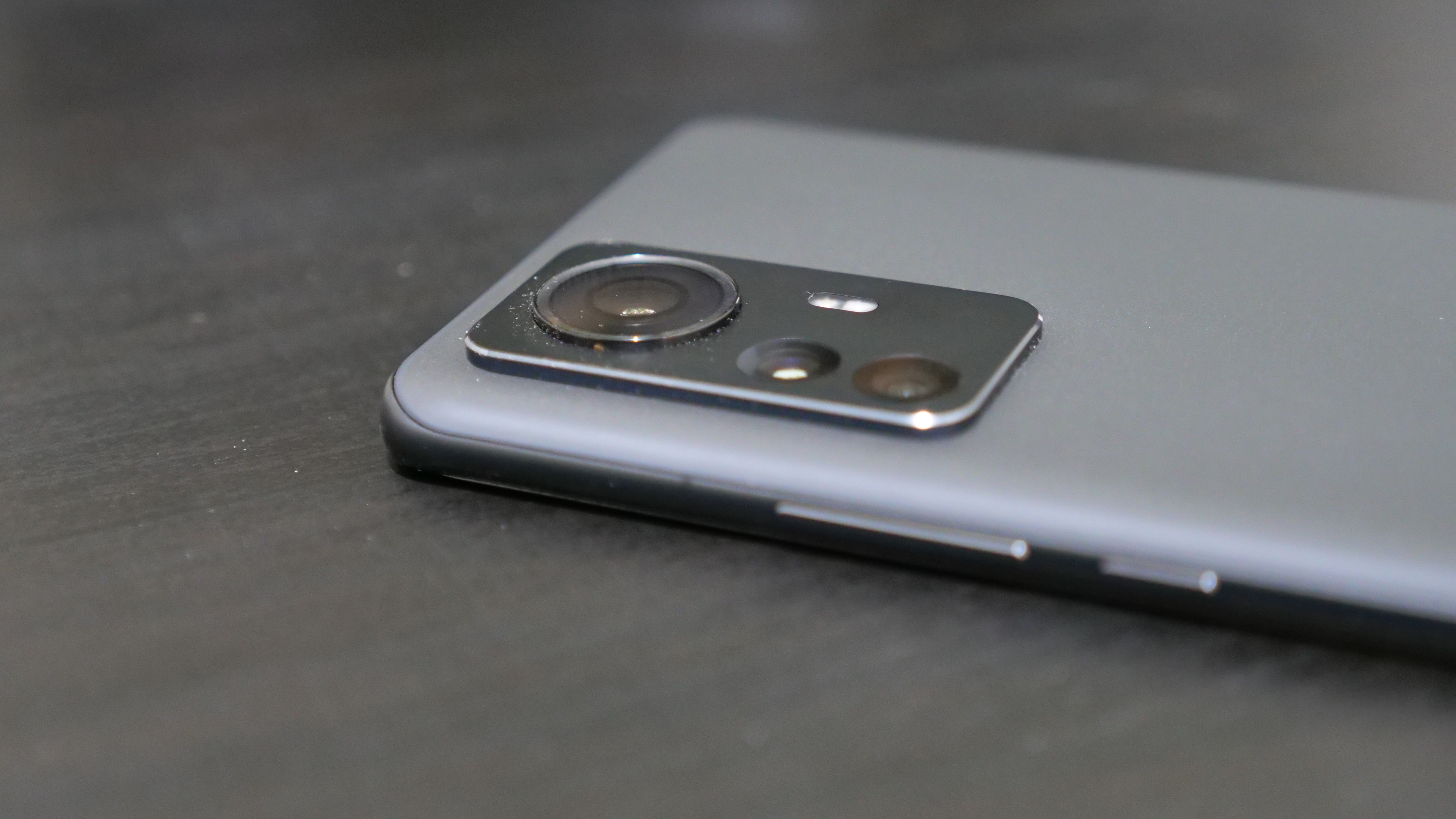
There are limits to what companies can do with a rectangular slab phone design, but Samsung, Apple and Google all proved within the last couple of years that it is still possible to carve out a unique design language and I’d love to see Xiaomi find some more defining characteristics of its own. With that said, the phone has outstanding ergonomics and you are likely going to put a case on it anyway, so looks aren’t everything.
Given its large 6.7-inch display and premium materials, the 7.23-ounce weight and 6.4 x 2.94 x 0.32-inch measurements are reasonably impressive. That slightly narrower frame does wonders for one-handed use. It manages to come in under the Pixel 6 Pro (6.45 x 3 x 0.35 inches, 7.4 ounces) in every metric, while the Galaxy S22+ (6.2 x 2.98 x 0.3-inches, 6.88 ounces) is slightly smaller and the iPhone 13 Pro — with a considerably smaller 6.1-inch display — is tiny compared to the others at 5.8 x 2.8 x 0.3-inches but weighs almost the same at 7.2 ounces.
It’s worth noting that while the Xiaomi 12 Pro should stand up to drops and scrapes as well as any modern flagship with Gorilla Glass Victus protection on the front and a Gorilla Glass on the back, Xiaomi doesn’t offer any official IP rating for the phone for water and dust resistance. This doesn’t necessarily mean the phone doesn’t have some level of resistance, but Xioami didn’t get it certified as such so you’ll want to steer clear of any water with it.
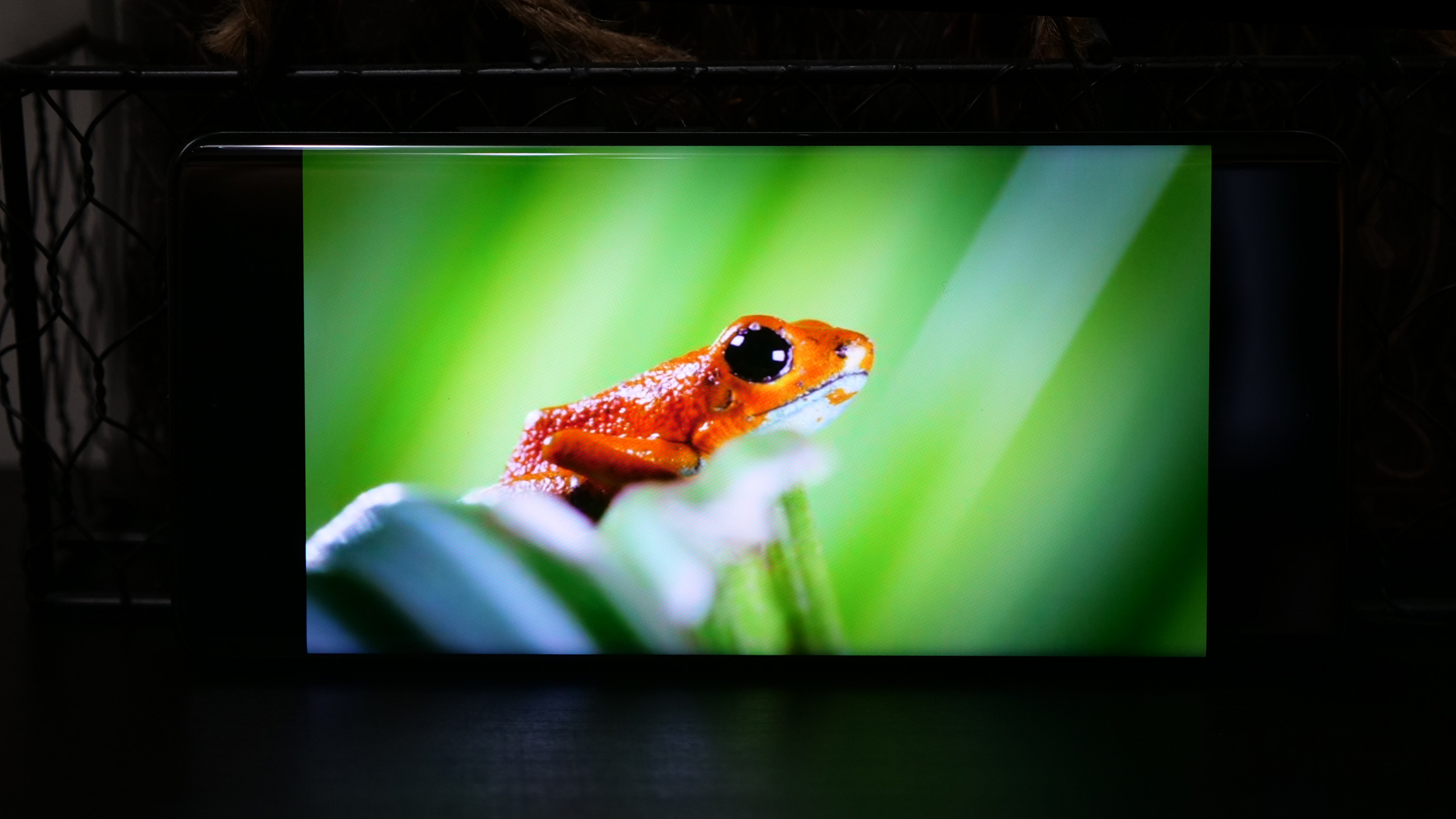
Xiaomi 12 Pro display
I thought the display might be where the Xiaomi 12 Pro ceded ground to its competitors, but the 6.7-inches WQHD+ (3200 x 1440 pixels) LTPO OLED display with its adaptive 120Hz refresh rate is just shy of best in class. Samsung retains an edge, but as you’ll see it’s more than the equal of anything else out there, including the iPhone.
To escape the predominantly colorless landscape of early Spring in Wisconsin, I turned on Life in Color with David Attenborough and watched the aptly titled “Chasing Color” episode to see how it compared to its rivals. Tuning the display to its Vibrant mode and maxing out the brightness, the Strawberry poison dart frogs, which are roughly the size of a fingernail (but they are toxic so probably don’t check that on your fingernail) are absolutely stunning on the 12 Pro’s display. They are the most varied and brightly colored frogs in the world and the 12 Pro drives that home with the blue, yellow, red and green frogs resembling something out of a neon fever dream. The speckled back of the blue frog also shows off the sharp detail of the WQHD+ display.
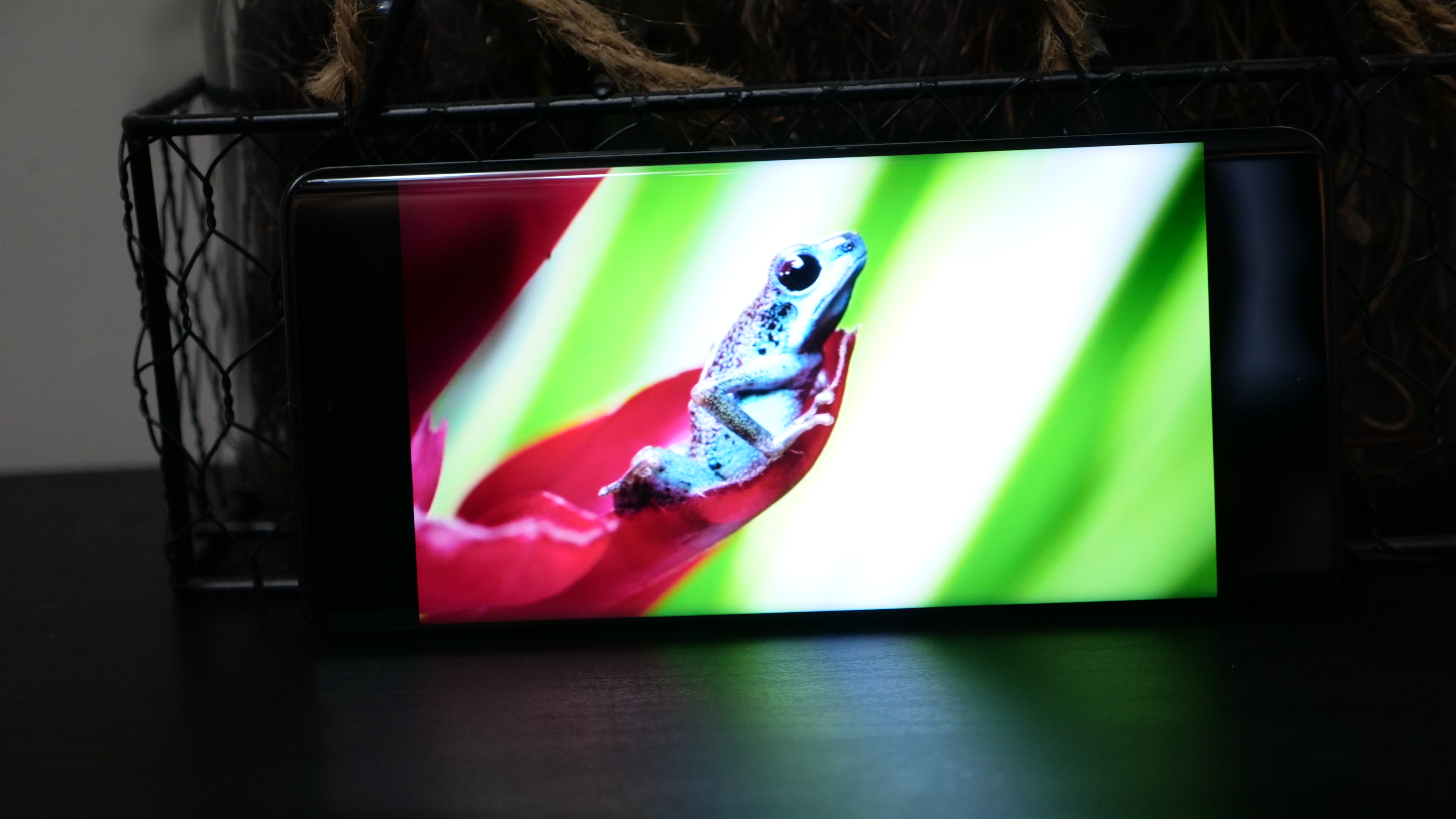
Our lab testing helps quantify where the Xiaomi 12 Pro falls in the pantheon of great phone displays. While it reproduced 81.9% of the DCI-P3 color gamut in its Natural color setting, which was enough to put it ahead of the iPhone 13 Pro (73.8%) and Pixel 6 Pro (73.8%), Samsung held the top spot at 90.9%. Cranking things up to the vivid settings on Android (sorry iPhone owners), the Galaxy S22+ still dominates at 150.2% with the Xiaomi 12 Pro topping out at 113.6%. Still, a fantastic result and a standout against the iPhone 13 lineup, but no match for Samsung.
Our Delta-E color accuracy test results (lower is better) didn’t go as well for the Xiaomi 12 Pro at 0.28 in its Natural setting. The Galaxy S22+ again leads with an impressive 0.23, while the iPhone 13 (0.26) landed between them and the Pixel 6 Pro (0.3) rounded out the list.
The Xiaomi 12 Pro delivered a strong performance in our brightness test with a peak of 931 nits. That’s enough to beat the Pixel 6 Pro (842 nits), but Apple and Samsung absolutely uncorked the brightness on their latest flagships. The iPhone 13 Pro (1,024 nits) set the high water mark for a mobile display late last year and the Samsung Galaxy S22+ (1,150) came crashing over that line this year.
While 120Hz is standard fare on flagship Android phones today, the LTPO panel that allows for adaptive 120Hz and the WQHD+ resolution of the Xiaomi 12 Pro are still a standout as that matches up with Samsung’s pricier Galaxy S22 Ultra.
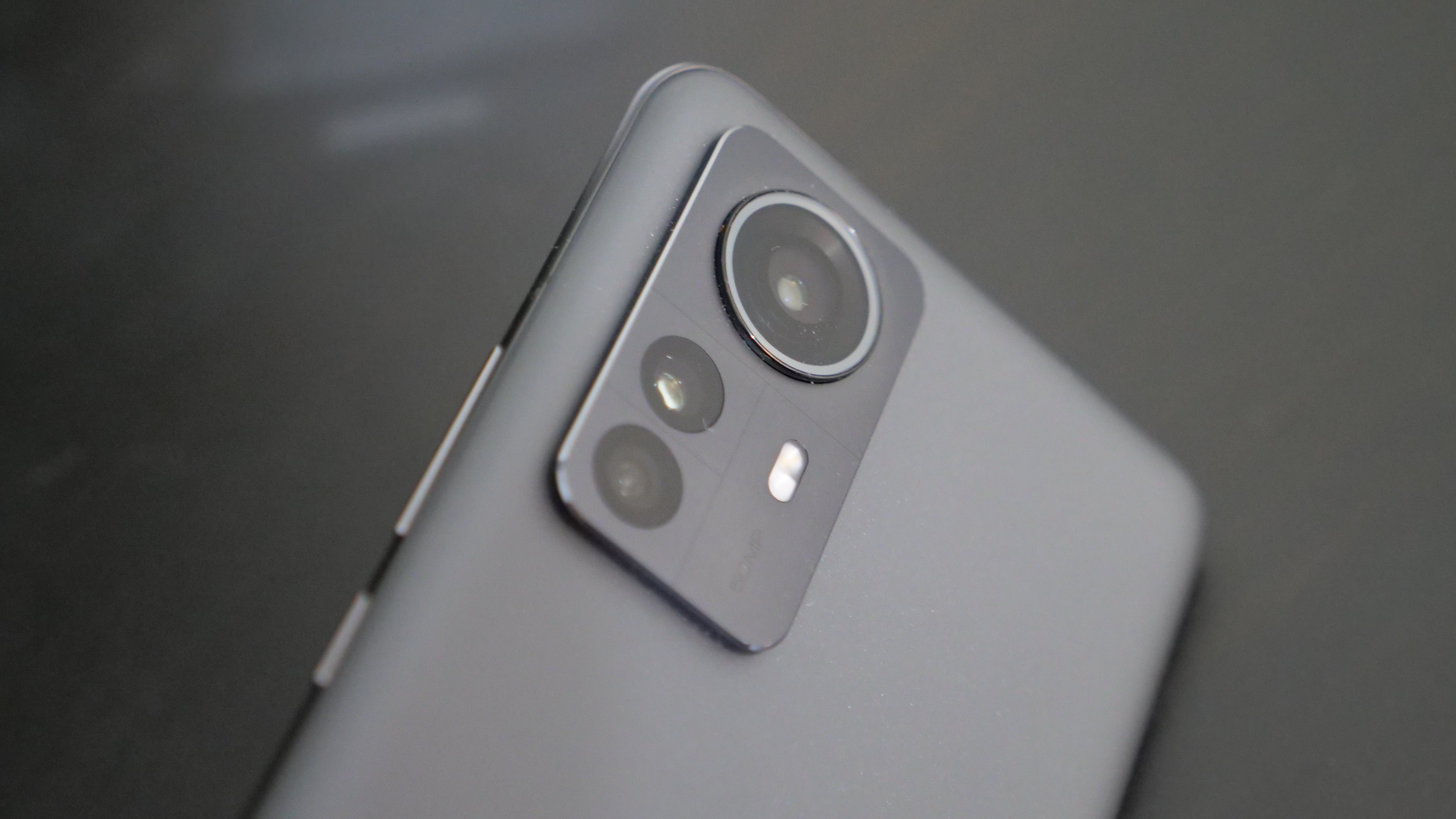
Xiaomi 12 Pro cameras
The Xiaomi 12 Pro cameras sound amazing on paper with a trio of 50MP lenses on the back. This includes the primary wide-angle at f/1.9, the ultra-wide (115 degrees) at f/2.2 and a 2x telephoto at f/1.9. All three lenses use quad pixel binning to deliver 12MP images to boost low-light performance and not blow through your storage, but you can take a full 50MP shot from any of the three if you like.
Reality comes up a little short of my expectations based on those specs, with the Xiaomi 12 Pro not quite matching up with the best from Samsung, Apple or Google, but that’s setting a high bar. If you are willing to spend a little time with the Pro mode or do a bit of post-processing, it’s not the fault of the sensors but the tuning of the camera app. At times it produces gorgeous images, but it occasionally fails to give any vibrancy or punch.
Starting off with the primary wide-angle, here’s a sampling of shots that show off the good and the bad. It performed well on my traditional shot of a mural on a nearby restaurant, it nails the vibrant red of the mural that contrasts with the muted brown siding of the building. It was an overcast day so there’s not much to glean from the evenly lit sky, but overall it’s doing a good job. What’s more, if you zoom in it retains some excellent detail in the ragged brickwork below the mural. The second shot is a cropped capture from the primary on a less cloudy day and it delivers well on the blue of the sky contrasting with the dark stained stone of the fountain top statues.

Xiaomi 12 Pro wide-angle

Xiaomi 12 Pro wide-angle

Xiaomi 12 Pro wide-angle

Xiaomi 12 Pro wide-angle Night mode
For the disappointing primary shot, I’m going to turn to a slider and show you a side-by-side with the same image from the iPhone 13 Pro. Now it’s not a gloriously colorful scene; the tall grasses haven’t sprung up yet and the geese are still milling around the ice flows waiting for them to melt. But the iPhone 13 Pro brings out some depth of color in the crushed grasses that is present in person, while the Xiaomi 12 Pro shot is just inexplicably dark and dreary by comparison.
The ultra-wide matches up almost identically with the primary in terms of color and sharpness, although it does suffer from the typical edge distortion that most phones have yet to solve. Just keep it in mind if you are taking a group photo, as people are less forgiving of a little warping than the traffic light on the left in the mural photo.

Xiaomi 12 Pro ultra-wide

Xiaomi 12 Pro ultra-wide

Xiaomi 12 Pro ultra-wide

Xiaomi 12 Pro ultra-wide
While the prospect of a 50MP telephoto at f/1.9 seemed amazing, the 48mm focal length killed most of my excitement. That’s a 2x zoom and it struggles to keep up with the iPhone 13 Pro and Galaxy S22+ at 3x or Pixel 6 Pro at 4x, despite its superior resolution and aperture. This lens consistently disappointed me when it came to color with everything feeling washed out. You can get usably sharp 5x shots and it does a passable impression of the Galaxy S22 Ultra with its Supermoon camera mode at night.

Xiaomi 12 Pro Supermoon telephoto

Xiaomi 12 Pro telephoto 2x

Xiaomi 12 Pro telephoto 10x

Xiaomi 12 Pro telephoto 20x

Xiaomi 12 Pro telephoto 2x

Xiaomi 12 Pro telephoto 20x

Xiaomi 12 Pro telephoto 10x

Xiaomi 12 Pro telephoto 2x

Xiaomi 12 Pro telephoto 10x

Xiaomi 12 Pro telephoto 20x
Returning to more positive impressions, I was happy with the results using the portrait mode on the Xiaomi 12 Pro. Ignore the blurry mess that it shows you when previewing the shot, it renders out quite well in the end as my pug is showing off here.

I was initially startled by the result from the 32MP front-facing camera and then realized that it turns a smoothing beauty mode on by default that gets way too aggressive at its job. There’s an abundance of other beautify filters available as well if you like, but switching them off is simple and yields solid results.
Xiaomi 12 Pro performance and graphics
The Xiaomi 12 Pro features the same Snapdragon 8 Gen 1 processor you’ll find in most Android flagships this year and comes with either 8GB or 12GB of RAM. Unsurprisingly, this lands it roughly in line with the others that we’ve tested so far this year, which means you’ll have all of the power you need for any task you set it to.
My standard phone task torture testing involves loading up a couple of dozen Google Chrome tabs, running a Netflix video in the background, and then swapping between apps including Twitter, YouTube Music, and Gmail. No piece of this presented a problem for the 12 Pro, but I did notice the occasional visual hiccup as it loaded an app or brought me back to the home screen. I found it was improved by eliminating MI UIs at times aggressive animations (Settings > Additional Settings > Accessibility > Vision > Toggle Remove animations).
120Hz support is everywhere in the core Android OS now, but we are still seeing app developers come on board. Xiaomi seems to have helped bring this along. Unlike the Galaxy S22, it does support full 120Hz performance on Call of Duty: Mobile. Infrequent glitches aside, the 12 Pro typically rendered everything beautifully and it even offers a Game Turbo app to boost the performance when gaming. While it lacks the dedicated buttons of something like the RedMagic 7 or Asus ROG Phone 5, pair this with something like the GameSir X2 and you’ve got an outstanding Nintendo Switch stand-in.
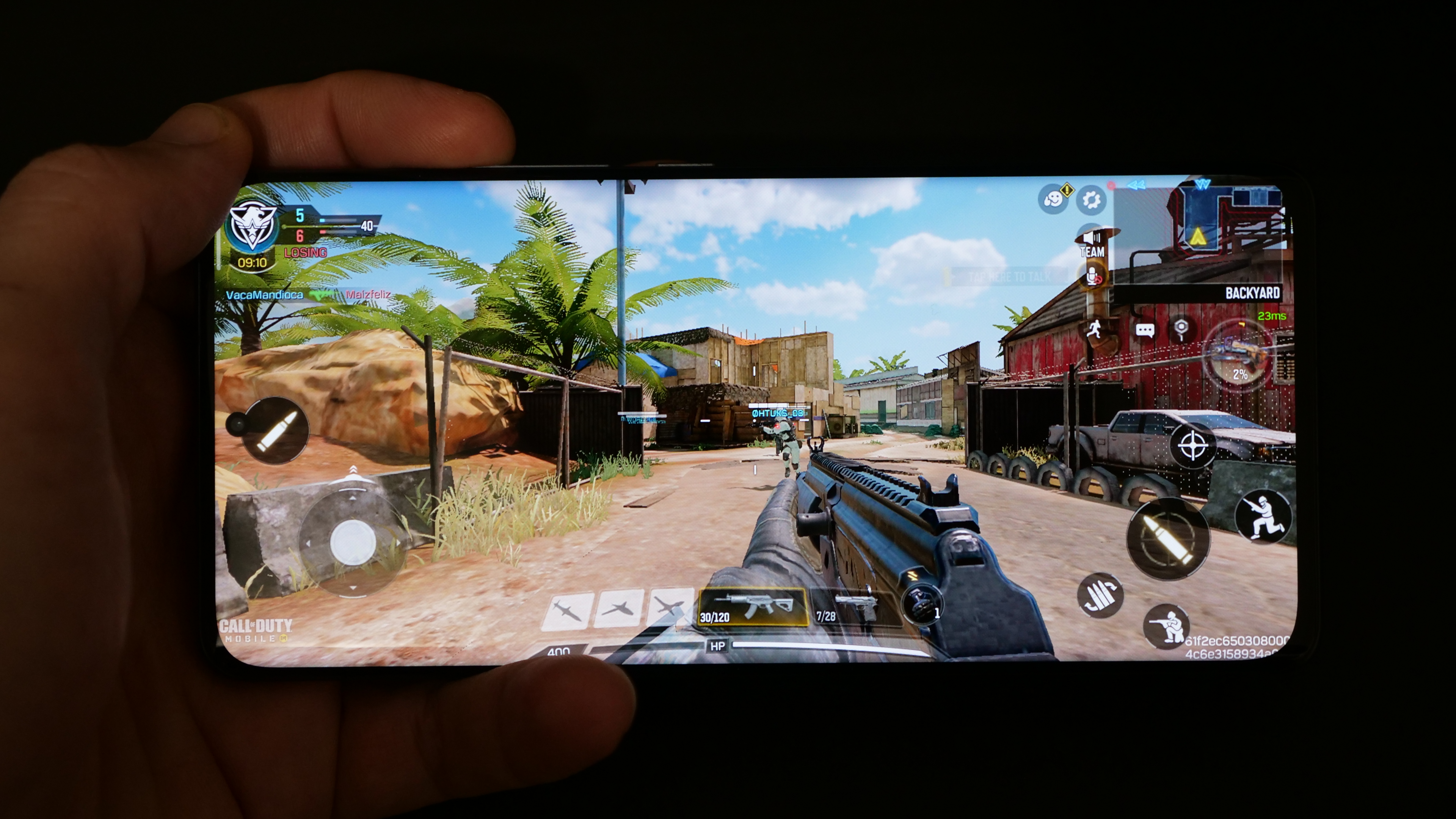
The Geekbench 5 score for the Xiaomi 12 Pro lets it flex on its Android competition with a multicore result of 3,783. While the iPhone 13 Pro (4,718) has nothing to fear, the Galaxy S22+ (3,361) and Pixel 6 Pro (2,760) fell by the wayside. Only the gaming-focused RedMagic 7 has managed a higher score among Android phones.
Our Adobe Premiere Rush test has the phone convert a 4K video to 1080p, and the Xiaomi 12 Pro finished in 48 seconds. That was precisely the same time for the Galaxy S22+ and the Pixel 6 Pro, while the iPhone 13 Pro (26 seconds) was waiting for them all at the finish line.
Graphics testing impressed for the Xiaomi 12 Pro as well with the phone delivering a blistering 61 fps in the Wild Life Unlimited graphics test. Only the iPhone 13 Pro (70fps) bested that score, with the Galaxy S22+ (60fps) nipping at its heels and the Pixel 6 Pro (40fps) yelling from the back that it has little legs and can’t keep up.
Overall, the Xiaomi 12 Pro is an absolute powerhouse. Xiaomi needs to iron out those rare graphical wrinkles that I saw, which are unquestionably software-related.
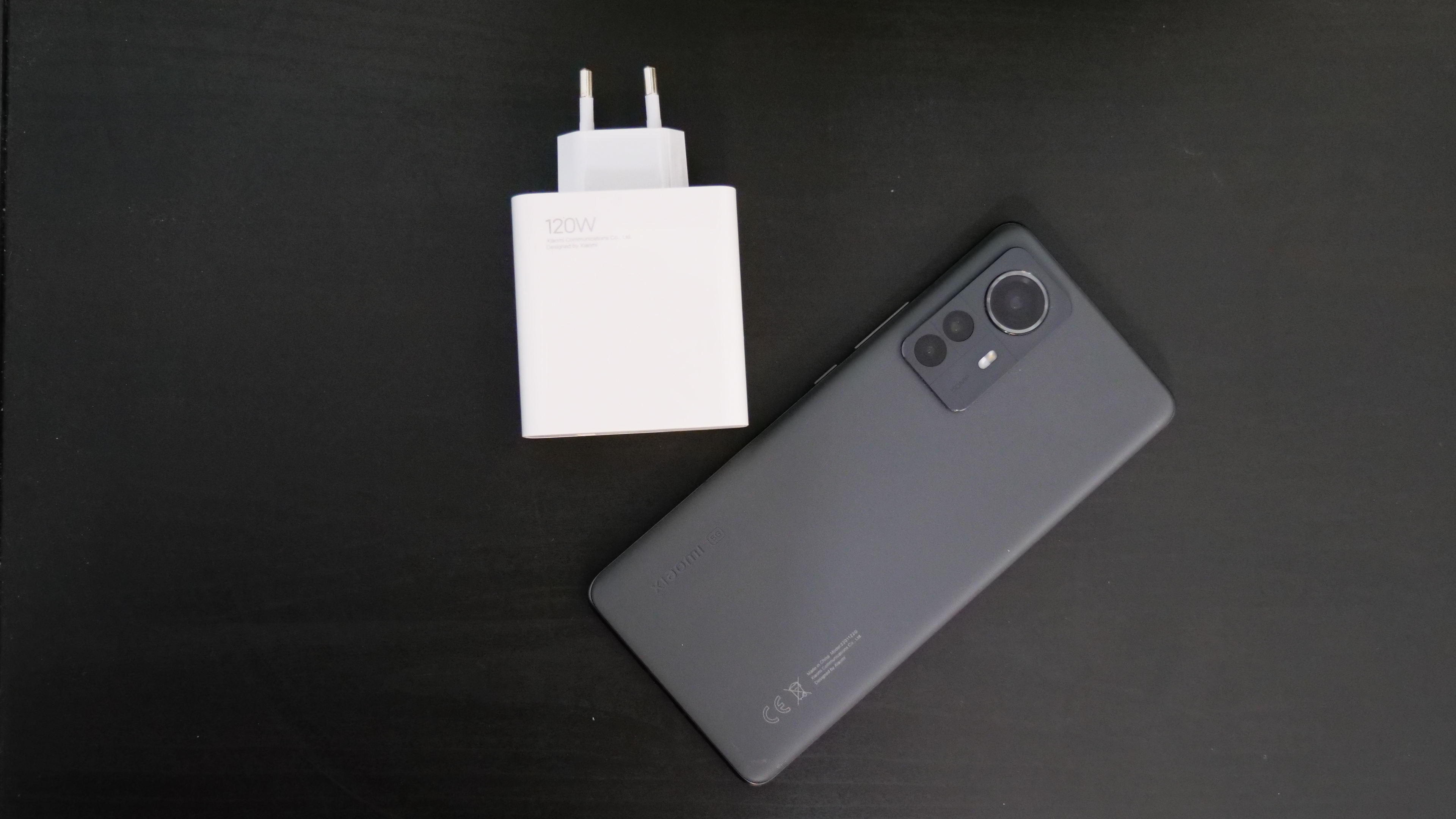
Xiaomi 12 Pro battery life and charging
I was slightly worried when I saw Xiaomi went with a 4,600mAh battery for the 12 Pro. We’ve seen the Snapdragon 8 Gen 1 devour the battery on a couple of phones now. Fortunately, Xiaomi appears to have cracked the code and delivered strong battery life and absolutely unbelievable charging speeds.
Our Laptop Mag Battery test has the phone continuously surf the web over cellular with the display set to 150 nits of brightness, and the Xiaomi 12 Pro on its 60Hz refresh rate setting averaged 11 hours and 29 minutes. Only the iPhone 13 Pro (12:00) outlasted it with the Galaxy S22+ (10:13) over an hour behind and the Pixel 6 Pro (7:47) sucking wind at the back of the pack. Better yet, ramping the Xiaomi 12 Pro’s display up to 90Hz (11:05) or 120Hz (10:31) still delivers solid results.
I had no trouble getting through a full day on a charge with the Xiaomi 12 Pro during my review period and often could have made it midway through a second day. I typically take the phone off the charger around 7:30 a.m. and return it to the charger at around 10:30 p.m. after roughly 2 hours of Netflix and/or YouTube streaming on Wi-Fi, web browsing, using social media, gaming for about 30 minutes and capturing photos and videos. Particularly during lighter photo and video days I finished with 20-25% battery remaining.
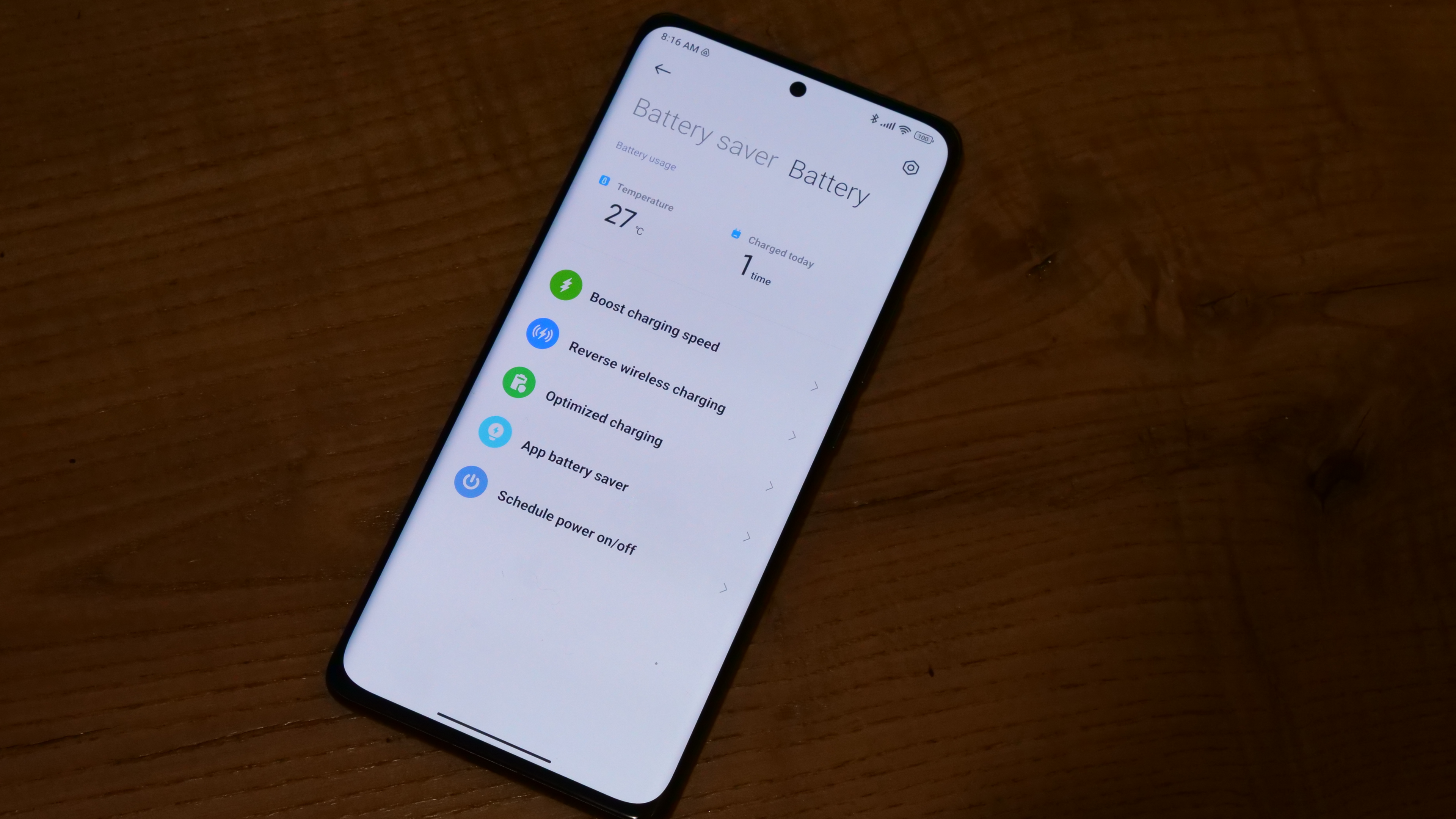
The Xiaomi 12 Pro is going to easily find a place among the phones with the best battery life based on our testing and my personal experience with the phone.
The Xiaomi 12 Pro impressed with its economical battery sipping, but fast charging is where it gets to turn things up and go straight past ludicrous speed to plaid. Not only does the 12 Pro support 120W wired charging (yes, that’s a full 100W more than the iPhone 13 Pro for those keeping score at home), the charger comes in the box if you can imagine such a thing. This nice setup allows the 12 Pro to reach a 69% charge in 15 minutes and top all the way up in less than 23 minutes. Wireless charging matches up with the OnePlus 9 Pro at an impressive 50W, still 5W ahead of the new faster wired charging on the Galaxy S22+.
The Xiaomi 12 Pro offers the best combination of battery life and charging speeds that I’ve ever reviewed.
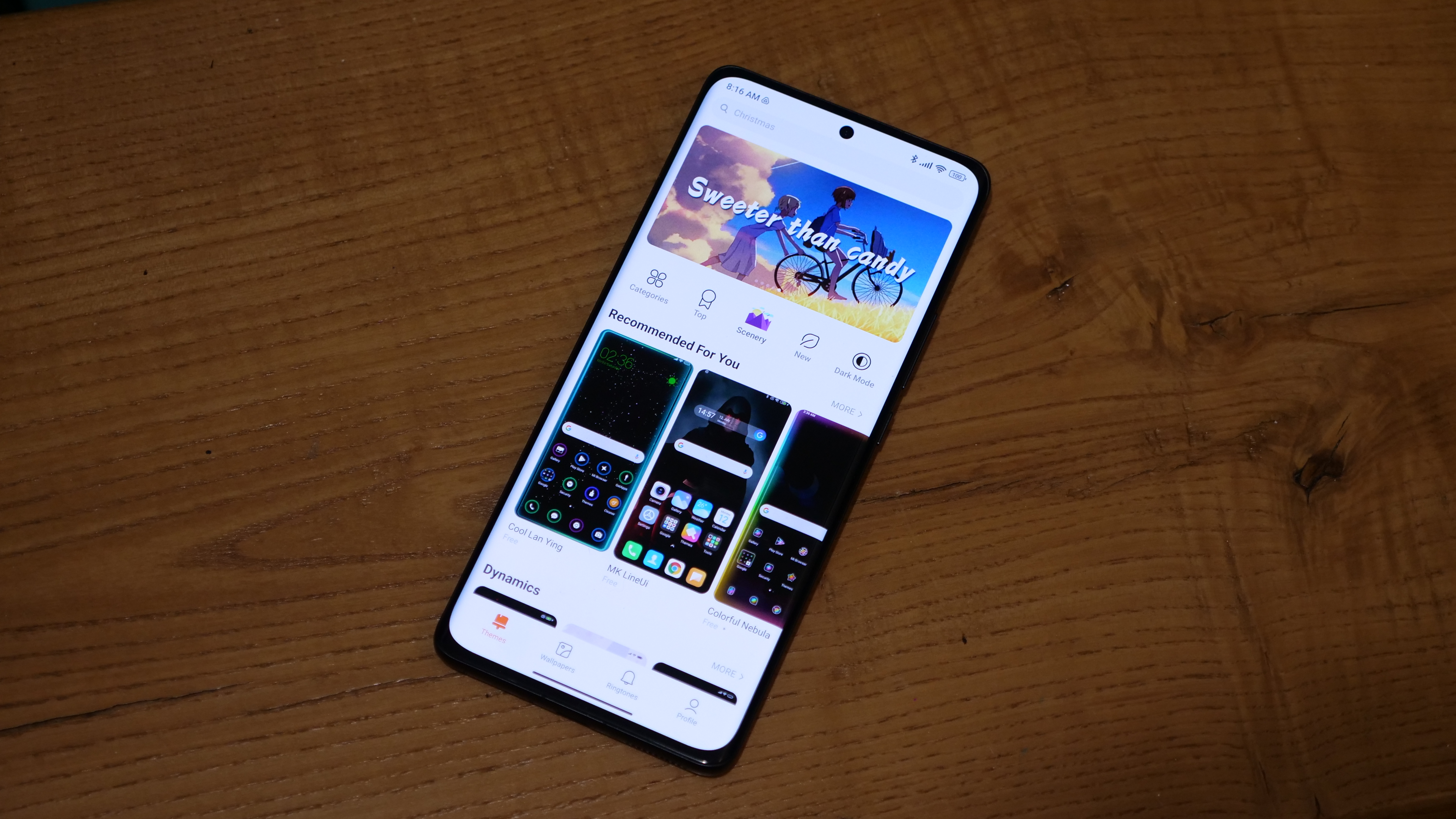
Xiaomi 12 Pro software
The Xiaomi 12 Pro runs MIUI 13, a modified version of Android 12. I’ll get to my feelings on MIUI in a moment, but the biggest software change for Xiaomi from late last year is the move to three years of major Android updates and four years of security updates. This comes up just shy of Samsung (4 major updates, 4 years of security updates) and Google (3 major updates, 5 years of security updates), but it’s enough that I no longer consider it to be a drawback for the device. Apple of course remains the gold standard in this regard with roughly six years of full software support for the iPhone.
Moving on to MIUI 13, it’s still more cruft on top of Android than I’d like, but Xiaomi has pulled back a bit on the bloatware and, like other Android 12 builds, you can shape things how you like. I had some fun playing with the various themes that Xiaomi offers and the ability to easily switch between them keeps things fresh. Depending on the theme, you get some of the Material You design found on the Pixel and other devices, but there are plenty where any vestige of the Material You changes are nowhere to be seen if you like the old Android look and feel.
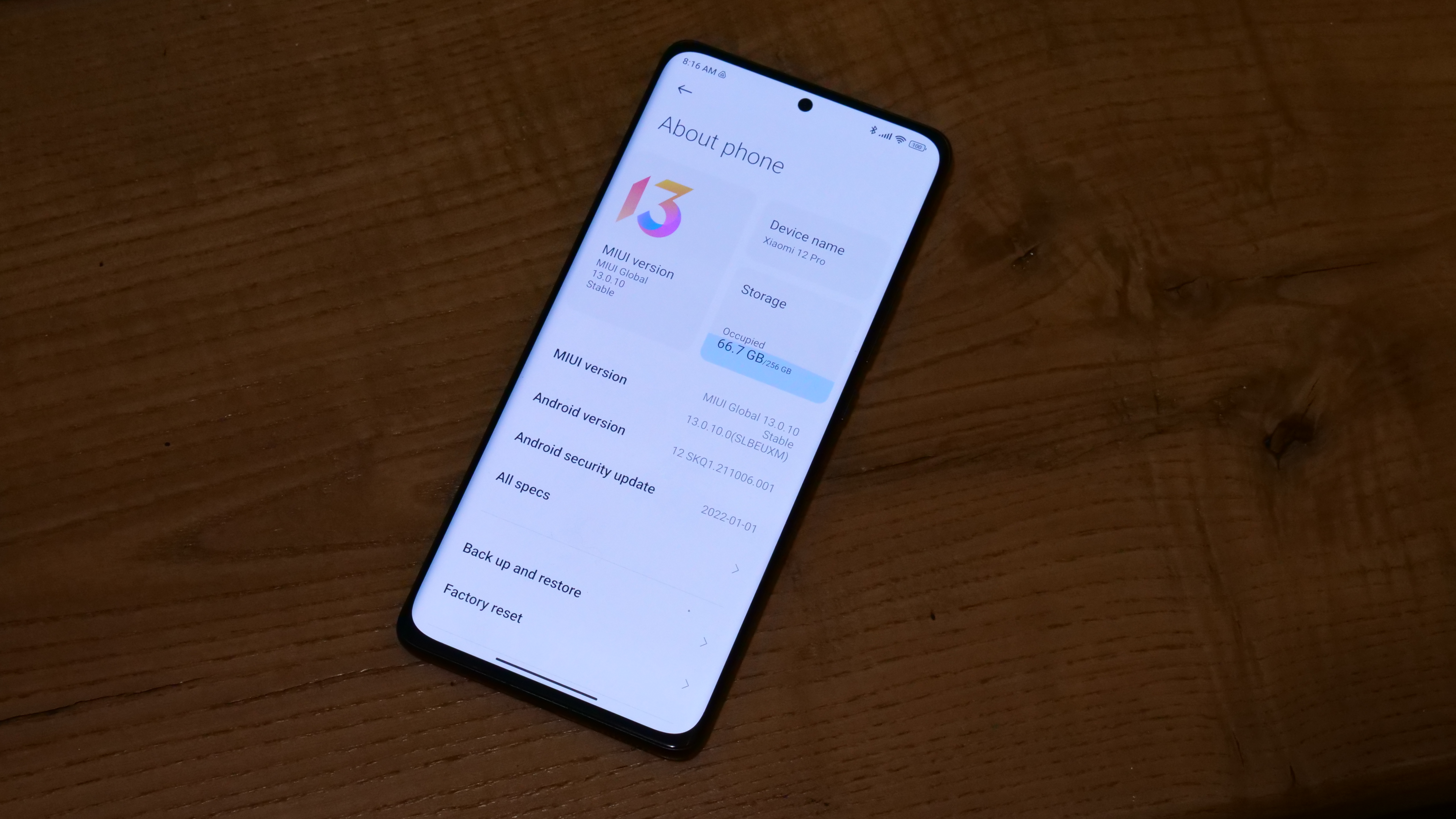
Some of the other updates for MIUI 13 include enhanced widgets, improved privacy features, more efficient storage and RAM management and Smart Balance for extended battery life. Whatever Android skin you are coming from you can adjust to MIUI 13 quickly and the powerful theming can help you along by finding an option that’s close to what you were accustomed to on your old device.
I do fault MIUI for those sporadic visual hiccups that I saw, as I think at times there’s just a bit too much going on with the animations and overlays. Performance was a major focus with the MIUI 13 update and it has certainly improved, but this is one of the reasons I prefer a simpler Android build.

Bottom line
The Xiaomi 12 Pro, starting at $999, is taking on the other flagship Android manufacturers on even ground and while that may be a slight misstep on the retail pricing front, the fact that it should typically be available for less means consumers will ultimately see it as the value brand.
To be fair, the hardware matches up well with anyone else on the market — from its beautiful LTPO 120hz display to its trio of 50MP cameras capable of up to 8K or 4K HDR 10+ video recording and powerful Snapdragon 8 Gen 1 processor. That’s before we get to its mind-bending 120W charging with the bundled charger and outstanding battery life.
Xiaomi has even addressed software support with its three years of major OS updates and four years of security updates commitment. However, we still need to see how fast it manages to deliver those updates. MIUI is a more significant overlay than most, but it’s good to see that level of support. While the camera performance and those occasional UI lags keep the Xiaomi 12 Pro from the top podium spots on the best smartphone list, it remains an excellent option that, with a few software updates, could be even more formidable.
Sean Riley has been covering tech professionally for over a decade now. Most of that time was as a freelancer covering varied topics including phones, wearables, tablets, smart home devices, laptops, AR, VR, mobile payments, fintech, and more. Sean is the resident mobile expert at Laptop Mag, specializing in phones and wearables, you'll find plenty of news, reviews, how-to, and opinion pieces on these subjects from him here. But Laptop Mag has also proven a perfect fit for that broad range of interests with reviews and news on the latest laptops, VR games, and computer accessories along with coverage on everything from NFTs to cybersecurity and more.


